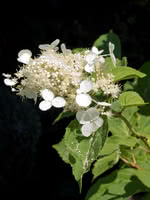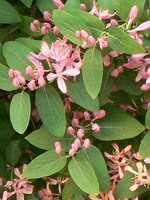Mon-Fri 9am - 5pm Mountain time
Panicle Hydrangea vs Twining Honeysuckle
Hydrangea paniculata
Lonicera dioica
CUSTOM GROW
CUSTOM GROW
Panicle Hydrangea is a large, broad-leaf, deciduous shrub that is prized for its ornamental appeal. It is easy to care for, long-lived, and cold-hardy.
Depending on the variety, its flowers change color throughout the blooming period. Make sure you water Panicle Hydrangeas regularly to achieve the most notable color change.
Twining Honeysuckle is a vine native to the forests of Canada and the United States.
It can often be found winding up the bark of large trees or spreading out as a ground cover where no supports are present. You will love the attractive, yellow-orange flowers with pink centers which turn into red, inedible berries.
Consider Twining Honeysuckle when trying to achieve a natural, spreading, unkempt look for your garden.

